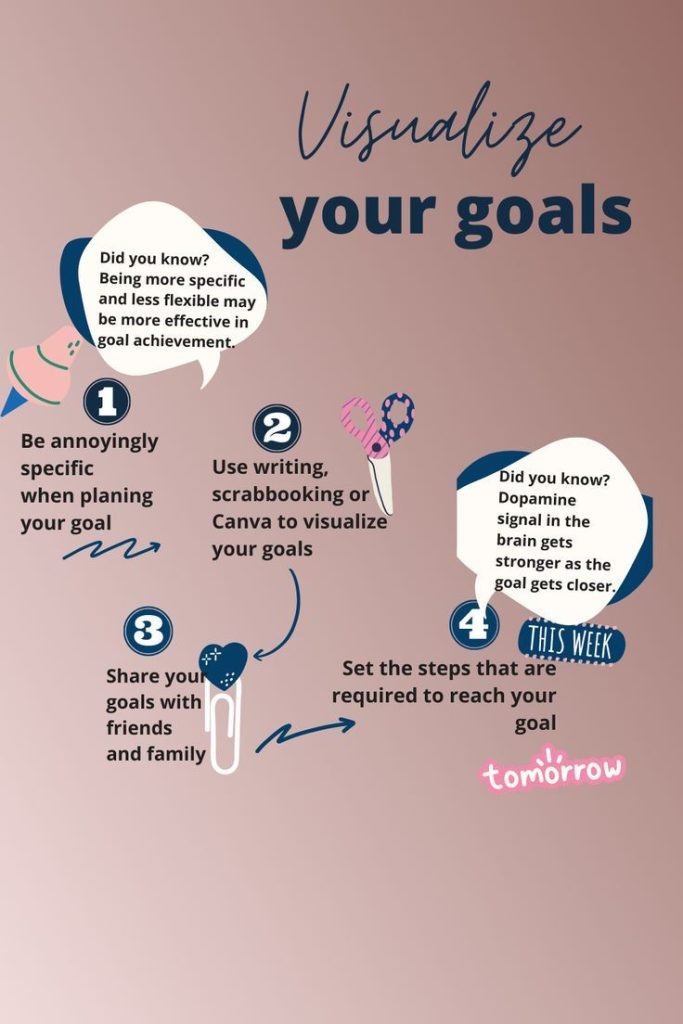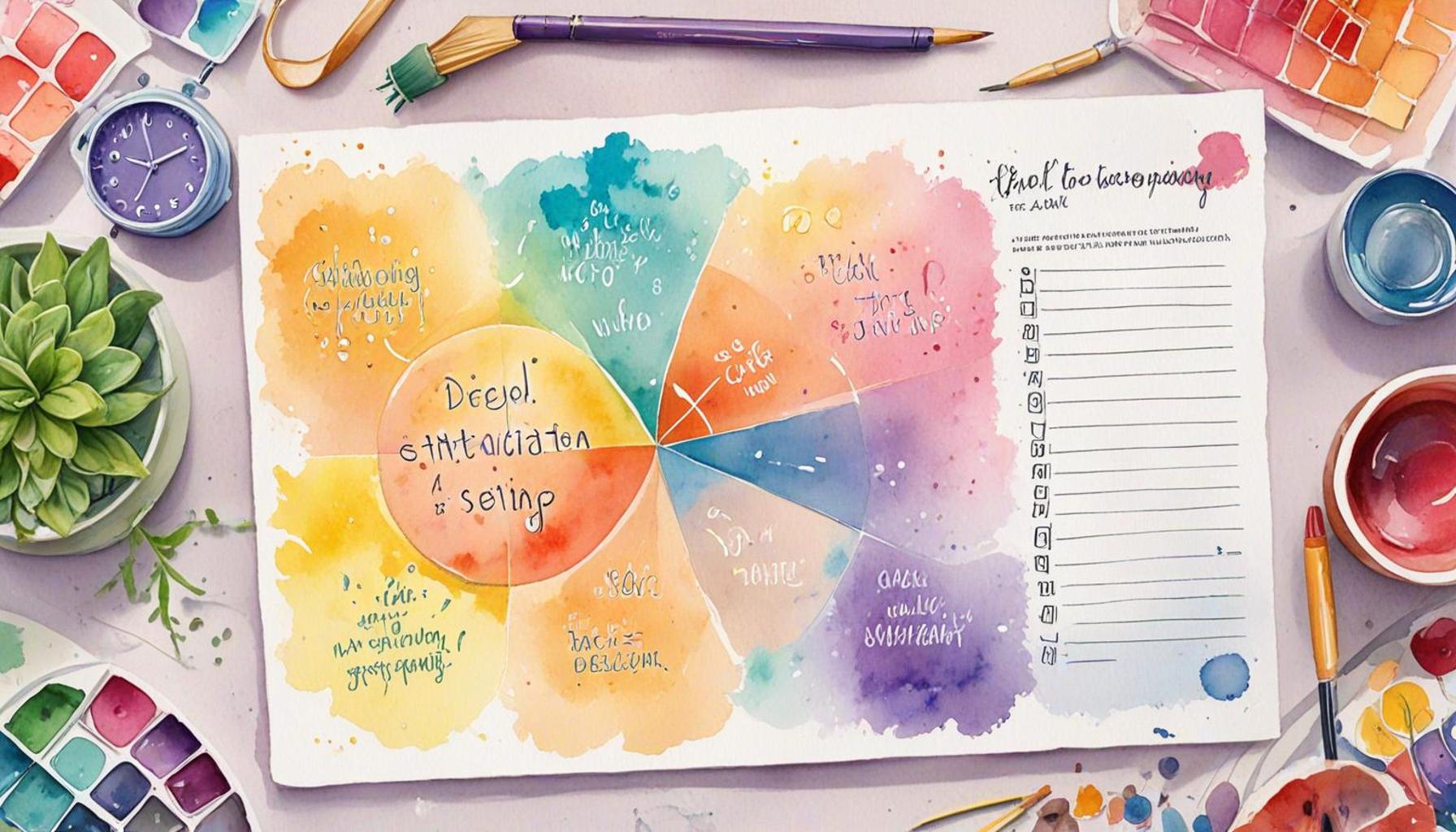Goal Visualization: A Tool to Overcome Challenges in the Practice of Positive Affirmations

The Power of Visualization in Achieving Goals
In an age characterized by rapid changes and various challenges, the practice of goal visualization has gained traction as a crucial tool for individuals aiming to instigate positive transformations in their lives. Many embark on their self-improvement journey with positive affirmations, repeating empowering phrases to boost their confidence and set intentions. However, when these affirmations seem inadequate or results stagnate, turning to goal visualization can provide a vital, enriching layer to the process of self-improvement.
Goal visualization is more than mere daydreaming; it is an active process that involves vividly imagining your desires and aspirations. By incorporating this practice into your daily routine, you can:
- Enhance motivation: Crafting a clear mental image of your goals helps maintain focus over time. For example, a young entrepreneur in Nigeria visualizing the success of their startup can draw motivation from imagining what their thriving business would look like, right down to the vibrant office atmosphere.
- Overcome fear: The act of visualizing success can alleviate anxiety associated with tackling challenging situations. Consider a student preparing for a crucial exam; by visualizing themselves calmly answering questions and receiving high marks, they can mitigate performance anxiety.
- Reinforce beliefs: Visualization serves to fortify the encouraging messages of positive affirmations, creating a cohesive narrative that aligns your mindset with your ambitions. A working-class individual might use this technique to visualize how their hard work and dedication lead to promotion in their job, thus reinforcing their capability and potential.
In the context of Nigeria, where many encounter daunting socio-economic hurdles, the integration of visualization techniques alongside affirmations can foster resilience. For instance, an artist in Lagos might visualize their art being displayed in prestigious galleries, combating the discouragement that may arise from a competitive environment. This kind of imagery cultivates a mindset that is not only optimistic but also action-oriented, enabling individuals to navigate the complexities of their circumstances.
Overcoming obstacles requires more than just willpower; it demands a strategic approach that combines both mindset and actionable steps. Mastering goal visualization can significantly enhance your chances of success. By dedicating just a few minutes each day to visualize your goals—whether personal, professional, or academic—you can begin to carve a path to success, even amid life’s uncertainties. This article will further explore practical tips and techniques for effective goal visualization, equipping you to connect with your aspirations more powerfully and purposefully.
CHECK OUT: Click here to explore more

Unlocking the Potential of Visualization
While positive affirmations are designed to uplift and motivate, their impact can sometimes feel intangible or fleeting. That’s where the practice of goal visualization comes into play—transforming abstract aspirations into vivid, actionable imagery. By visualizing your goals with clarity and detail, you are not just dreaming; you are actively engaging your mind in the creation of your desired reality. This mental rehearsal can be particularly beneficial for individuals in Nigeria, where social and economic challenges may often create barriers to achieving dreams.
Visualization can act as a catalyst in reinforcing and accelerating the effectiveness of positive affirmations. Consider how goal visualization can significantly enhance the self-belief and resilience needed to overcome obstacles:
- Creating Emotional Connections: The visualization process is inherently emotional; it connects you to the feelings associated with achieving your goals. Picture a Nigerian graduate who has long envisioned their career in healthcare—visualizing the day they don their white coat and step into the hospital. This connection reinforces their dedication to completing their education despite financial challenges, reminding them of the purpose behind their struggle.
- Defining Clear Pathways: Visualization allows you to map out tangible steps toward your goals. A young aspiring musician in Abuja, when visualizing a future performance, might detail the process—writing songs, recording in a studio, and the interactions with fans. This clarity can lead to driven actions that propel their career forward.
- Embodying the Success Experience: Visualization helps you embody the experience of success before it’s realized. A startup founder in Lagos might visualize pitching to potential investors and receiving encouraging responses. By absorbing these feelings of achievement and acceptance, the founder’s self-perception can shift, making them more likely to succeed in actual pitches.
For individuals experiencing stagnation in their affirmation journey, goal visualization serves as a vital tool to re-align and invigorate their practices. It compels you to engage your senses, creating a more immersive experience. As vision becomes clearer, so too does the pathway to realizing those aspirations, making it a practical solution for overcoming doubts and fears that can arise from repeated affirmations that do not seem to yield immediate results.
Moreover, in a country like Nigeria, where diverse backgrounds lead to various worldviews and challenges, effective visualization techniques can be tailored to local contexts. By integrating cultural symbols, personal experiences, and community aspirations into visualization practices, individuals can foster deeper connections to their goals. This localized approach not only empowers but also allows for greater relativity, making the journey toward achieving aspirations feel personal and attainable.
As we delve deeper into this topic, we will explore specific techniques and exercises for effective goal visualization that complement the practice of positive affirmations, ensuring you have a holistic approach to overcoming life’s hurdles.
| Advantage Category | Insight |
|---|---|
| Enhanced Clarity | Goal visualization allows individuals to create a vivid mental image of their desired outcomes, leading to greater clarity in their affirmations and daily activities. |
| Motivation Boost | Visualizing success can significantly amplify motivation, as it helps to anchor feelings of hope and enthusiasm towards achieving one’s goals. |
| Overcoming Doubt | By regularly practicing goal visualization, individuals can counteract negative self-talk and replace it with empowering thoughts, reinforcing the practice of positive affirmations. |
| Emotional Resilience | This method enhances emotional resilience, enabling practitioners to stay grounded during challenging times and maintain a positive mindset. |
Continuing the exploration of goal visualization as a tool for overcoming challenges in positive affirmations, it becomes clear that the act of visualizing one’s aspirations plays a crucial role in transforming thoughts into reality. The practice serves not only to clarify goals but also to reinforce the belief that they are attainable. By creating a compelling mental picture of success, individuals are encouraged to take actionable steps toward their goals.Moreover, visualization acts as a powerful antidote to doubt and negative thinking patterns. As one becomes more skilled in visualizing desired outcomes, they can gradually replace limiting beliefs with empowering narratives. This reshaping of thought patterns is essential for anyone looking to deepen their practice of positive affirmations and manifest their intentions more effectively.
YOU MAY ALSO LIKE: Read read another article
Techniques for Effective Goal Visualization
Once an individual understands the importance of goal visualization, the next step involves mastering the techniques that can nurture this practice. By integrating simple yet powerful visualization exercises in daily routines, people can enhance their affirmation practices and confront challenges with renewed vigor. Here are some proven techniques that anyone can apply, particularly in the context of Nigeria’s diverse cultural landscape:
- Vision Boards: One of the most popular and effective methods of visualization is the creation of a vision board. This involves compiling images, quotes, and symbols that resonate with your goals and aspirations. For example, a young entrepreneur in Lagos might collect images representing successful businesses, financial independence, and community upliftment. By placing the vision board in a prominent spot, it serves as a daily reminder of one’s potential, reinforcing their positive affirmations with visual stimuli.
- Guided Imagery: Guided imagery is another excellent technique that can enhance goal visualization. In this method, individuals can use audio recordings or live sessions to lead them through a visualization process, helping them vividly imagine achieving their goals. A student preparing for a major examination might listen to a guided session that takes them through their success in the exam room, building confidence and relieving anxiety.
- Daily Visualization Practice: Setting aside just a few minutes a day for visualization can yield remarkable results. Individuals are encouraged to find a quiet space and close their eyes, picturing their goals in as much detail as possible. For instance, an artist visualizing their artwork displayed in a gallery can envision the colors, textures, and audience reactions. This mental alignment with their aspirations can ignite passion and drive.
- Storyboarding Your Future: Storyboarding is a technique borrowed from filmmakers but can be easily adapted for personal use. Creating a series of images or sketches that represent different stages of achieving a goal can make the process less daunting. For a Nigerian farmer aiming for a successful harvest, creating a storyboard illustrating each step—from planting and nurturing the crops to harvesting—can provide clarity and motivation.
Incorporating these methods not only enhances the visualization experience but also bridges the gap between affirmations and real-world actions. Moreover, the community aspect inherent in Nigeria can play a significant role. Working with peers, participating in visualization workshops, or community groups focused on personal development can amplify the effects of visualization practices. By sharing goals and visualizations, individuals can foster a support system that nurtures mutual growth and accountability.
For those who may feel disconnected from their affirmations due to cultural beliefs or personal experiences, tailoring visualization practices can make them more relevant and effective. Integrating local stories, proverbs, and traditions into visualization exercises can make a profound impact. A young woman from a traditional background may find strength in visualizing her journey as a warrior, drawing from stories passed down through generations.
The combination of these effective visualization techniques with positive affirmations has the power to transform obstacles into stepping stones. As one delves deeper into these practices, they will find that the pathway to realizing dreams is not just a distant possibility, but an achievable reality, infused with purpose and intention.
LEARN MORE: This related article may interest you
Conclusion
In conclusion, goal visualization emerges as a powerful catalyst for overcoming challenges when paired with positive affirmations. The techniques discussed—such as vision boards, guided imagery, and storyboarding—highlight the transformative potential of visual practices in aligning one’s thoughts with aspirations. As individuals in Nigeria navigate a diverse cultural landscape, these methods can be tailored to resonate deeply with personal experiences and community narratives, fostering a sense of connection and motivation.
Moreover, the community-oriented nature of Nigerian culture further enriches the practice of visualization. Engaging with peers through workshops or group sessions can enhance motivation and accountability, creating an environment where shared goals are nurtured. This collaborative spirit not only strengthens individual resolve but also inspires collective growth.
As one integrates these visualization methods with daily affirmations, it becomes evident that barriers are not insurmountable; they can become stepping stones toward greatness. The detailed imagery crafted through visualization exercises can ignite passion, clarify purpose, and ultimately mold one’s reality.
Finally, the exploration of local stories and traditions within visualization practices not only ensures relevance but also empowers individuals to draw strength from their heritage. As we continue to delve into the synergy of goal visualization and positive affirmations, we discover that the journey to realizing dreams is not merely about the destination, but about the rich, purposeful journey along the way.



